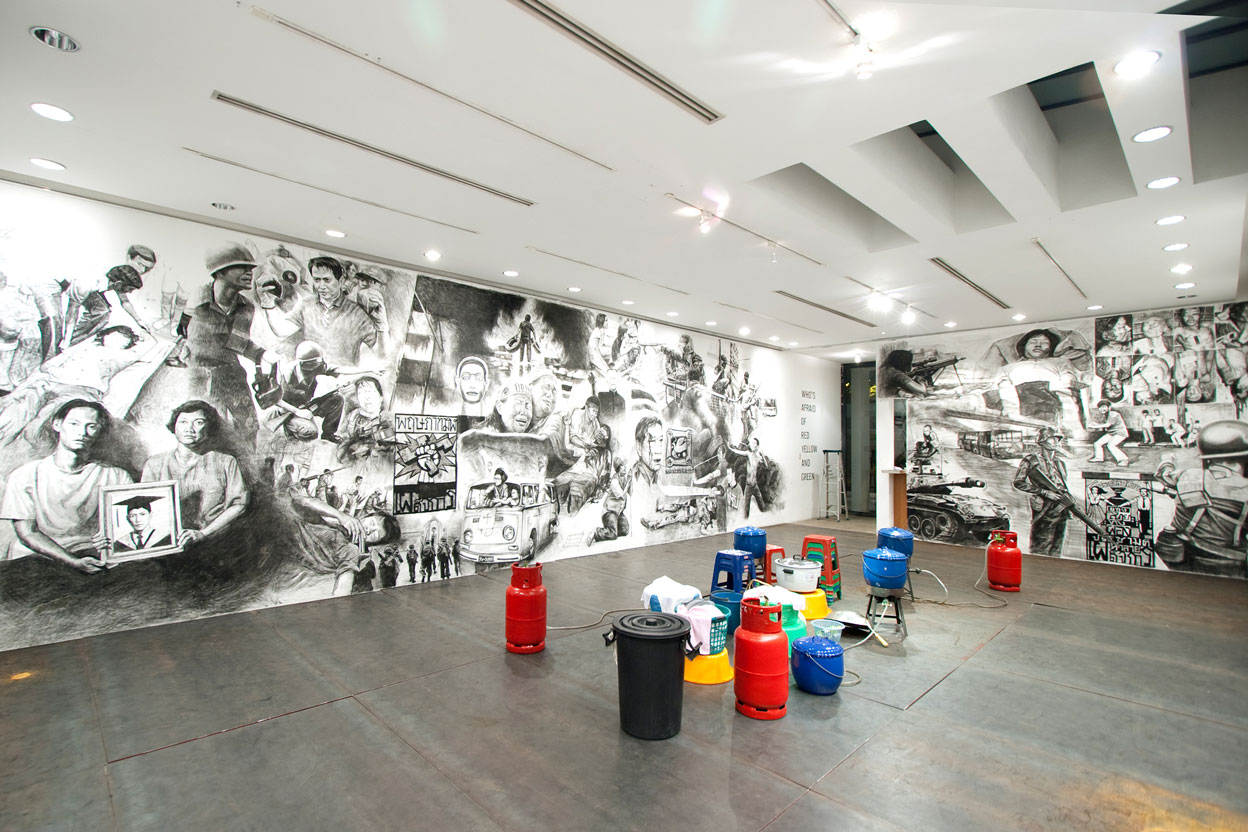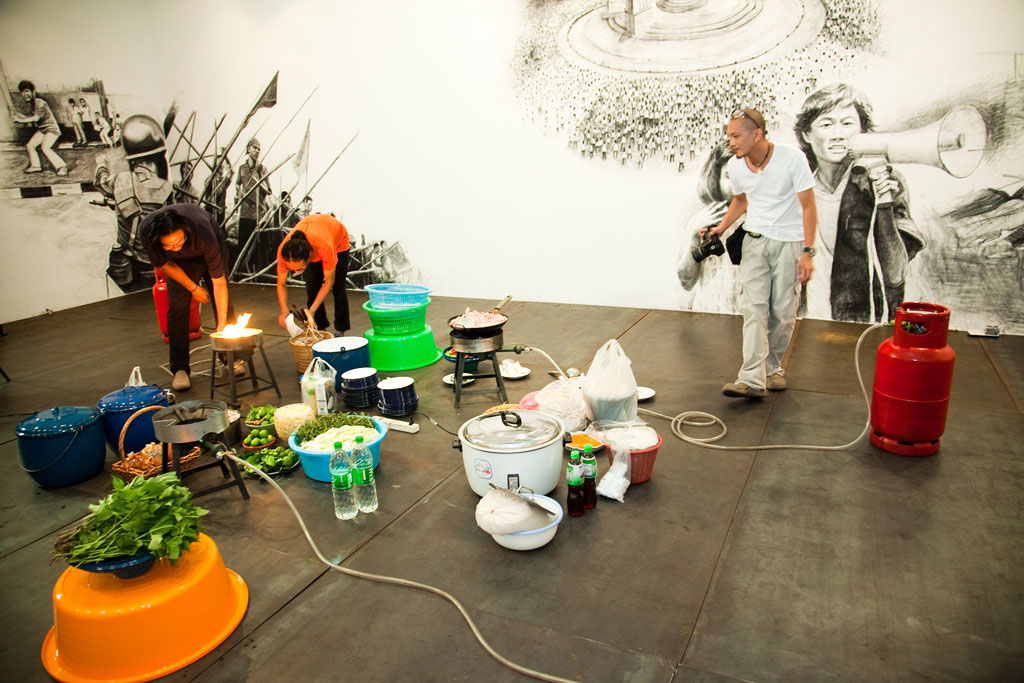ART-PRESENTATION: Rirkrit Tiravanija-Who’s Afraid of Red, Yellow and Green
 Even though Rirkrit Tiravanija’s diverse artistic production eludes classification, he has accurately described it as “relational”: a body work focused on real-time experience and exchange that breaks down the barriers between the object and the spectator while questioning the art object as fetish, and the sacredness of the gallery and museum display.
Even though Rirkrit Tiravanija’s diverse artistic production eludes classification, he has accurately described it as “relational”: a body work focused on real-time experience and exchange that breaks down the barriers between the object and the spectator while questioning the art object as fetish, and the sacredness of the gallery and museum display.
By Dimitris Lempesis
Photo: Hirshhorn Museum Archive
Rirkrit Tiravanija’s solo exhibition “Who’s afraid of red, yellow, and green” transforms the Hirshhorn’s galleries into a communal dining space in which visitors are served curry and invited to share a meal together. The installation includes a large-scale mural, drawn on the walls over the course of the exhibition, which references protests against Thai government policies. Additional historic images speak to protest and the present. The exhibition also includes a series of documentary shorts curated exclusively for the Hirshhorn by Thailand’s leading independent filmmaker and Palme d’Or prize-winner Apichatpong Weerasethakul in collaboration with the artist. The title of the exhibition “Who’s afraid of red, yellow, and green”, refers to the colors worn by the various factions in recent Thai government protests. The title also refers to the 1982 vandalism of Barnett Newman’s similarly titled painting in Berlin, which was motivated by the attacker’s belief that Newman’s painting was a “perversion” of the German flag. To soften Newman’s provocative title, Tiravanija uses parentheses and lowercase letters, suggesting that viewers answer the question as framed: “Who is afraid of what these colors symbolize?” Rirkrit Tiravanija was born in Buenos Aires in 1961 and was raised in Thailand, Ethiopia, and Canada. He studied at the Ontario College of Art in Toronto (1980-84), Banff Center School of Fine Arts (1984), School of the Art Institute of Chicago (1984-86), and Whitney Independent Studies Program in New York (1985-86). Since the 1990s, Tiravanija has aligned his artistic production with an ethic of social engagement, often inviting viewers to inhabit and activate his work. In one of his best-known series, begun with “Pad thai” (1990) at the Paula Allen Gallery in New York, Tiravanija rejected traditional art objects altogether and instead cooked and served food for exhibition visitors. For his second solo exhibition in New York, held at 303 Gallery in 1992, Tiravanija filled the white rooms with stacks of cultural cast-offs, rendering the space into what seemed like a storage facility, demoting the primacy of the revered art object. Over the following years, the artist ignored the prescribed division between art and life, constructing communal environments that offer a playful alternative venue for quotidian activities. In 1997 Tiravanija began an engagement with the monoliths of modernist architecture when he installed in the Museum of Modern Art’s sculpture garden “Untitled (Glass House)”, a child-size version of Philip Johnson’s famed Glass House (1949). For “A retrospective (tomorrow is another fine day)” (2004), viewers are guided through a seemingly objectless modernist space in the Museum Boijmans Van Beuningen in Rotterdam, inhabited only by minimal architectural interventions, tour guides, and theatrical readings by Tiravanija’s friend, artist Philippe Parreno. In 2005 Parreno and Tiravanija collaboratively constructed five puppets caricaturizing themselves and Pierre Huyghe, Liam Gillick, and Hans Ulrich Obrist, which were then employed for the film “untitled (stories are propaganda)” (2005). His engagement with propaganda can also be seen in his ongoing series of commissioned drawings derived from newspaper images and in “untitled (fear eats the soul/ November 1–8, 2004”), in which Tiravanija painted the phrase “fear eats the soul” over the front page of The New York Times. For his ongoing project “The Land” (begun in 1998), a collaborative artistic, architectural, and environmental recovery project in Sanpatong, Thailand, residents and artists are welcomed to use a plot of land as a laboratory for development‚ cultivating rice, building sustainable houses, or channeling solar power.
Info: Curators: y Mark Beasley, Hirshhorn Museum and Sculpture Garden, Independence Avenue and 7th Street, Washington, Duration: 17/5-24/7/19, Days & Hours: Daily 10:00-17:30, https://hirshhorn.si.edu

